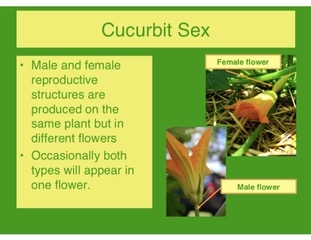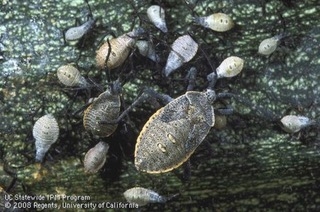A gardener struggling to use mountains of zucchini is almost a meme in the gardening community, so it's very humbling to have to tell people you can't grow it—kinda makes you look like a grade down from a Master Gardener! And even though I know my conditions are extreme out here at the edge of the Volcanic Tableland, my pests normally come on four legs, not six. So, having to surrender growing squash to the bugs that stole their name is pretty frustrating. But I know this is a situation that many better gardeners than I have surrendered to!
The normally-more-than-daily examinations of each giant, sticky, rippy leaf for the glistening little bronze eggs, all while the progenitors scurry for safety in the folds of the struggling squash plant is just more than most of us are up for.
I know people have lots of strategies to deal with these pernicious pests, but none that have ever seemed worth the work to me. All require diligence. Leaving home for even a few days can throw momentum back to the bugs. More than that and the situation could get completely out of control!
But gardeners are always dreamers, and long before the days warm up in the spring, we are scheming, trying to solve seemingly unsolvable problems—at least I am—and squash bugs is a tough one. I started searching online, but again, the solutions weren't easy, realistic, or convincing.
Somehow, while researching squash I stumbled on parthenocarpy, a term I had learned somewhere back in a plant class, but certainly not a term I would have known to search for. Seedless watermelons are parthenocarpic—production of the fruit does not require fertilization of the ovule. For more about parthenocarpy and cucurbit sex, see this University of Nebraska pdf.here.
The important thing is that since fertilization is not required, you can keep the plants under floating row covers for their entire lives, physically protecting them from squash bugs. If you're inexperienced with row covers, they can really help in a number of situations, probably more commonly to raise temperatures in the shoulder seasons. Here's an introductory article on row covers from a MG blog in Wisconsin.
Yeah, but where do I find seeds? If they're parthenocarpic, do they even have seeds? Yes, they do have seeds, and some of the top varieties are ‘Cavilli,' ‘Venus,‘ and ‘Gold Rush.' I chose ‘Partenon'*—who can resist a squash that seems to have been named after a Greek temple? I planted the seeds in the ground in late May without a clear plan of exactly how I would cover the plants. But they did indeed come up. I improvised something from bits and pieces I had laying around, and eventually built a more robust but very simple portable hoop house (rebar and PVC) for them.
The results have been beyond what I could have imagined. So far, no squash bugs and plenty of zucchini! I'll do this again next year in a different part of the garden. I may look for an additional parthenocarpic variety. This field test from Cornell ranks ‘Dunja' as even more efficient than ‘Partenon.'
But with success, I'm now the one searching my cookbooks, Paprika (an excellent recipe database program for your digital devices) and online for good ways to use the bounty. Today I made zucchini pickles and a fabulous zucchini butter that will go great on crackers or bread, perhaps with a bit of pesto or fresh basil on top and—with any luck—tomatoes later in the season!
*By the way, in the University of Nebraska presentation, they refer to ‘Parthenon' zucchini from Thompson and Morgan. It is actually ‘Partenon'—no h in there!
Resources
https://agronomy.unl.edu/documents/parthenocarpic_zucchini2008.pdf
http://www.hort.cornell.edu/expo/proceedings/2014/Vine%20crops/Seedless%20squash%20Reiners.pdf

